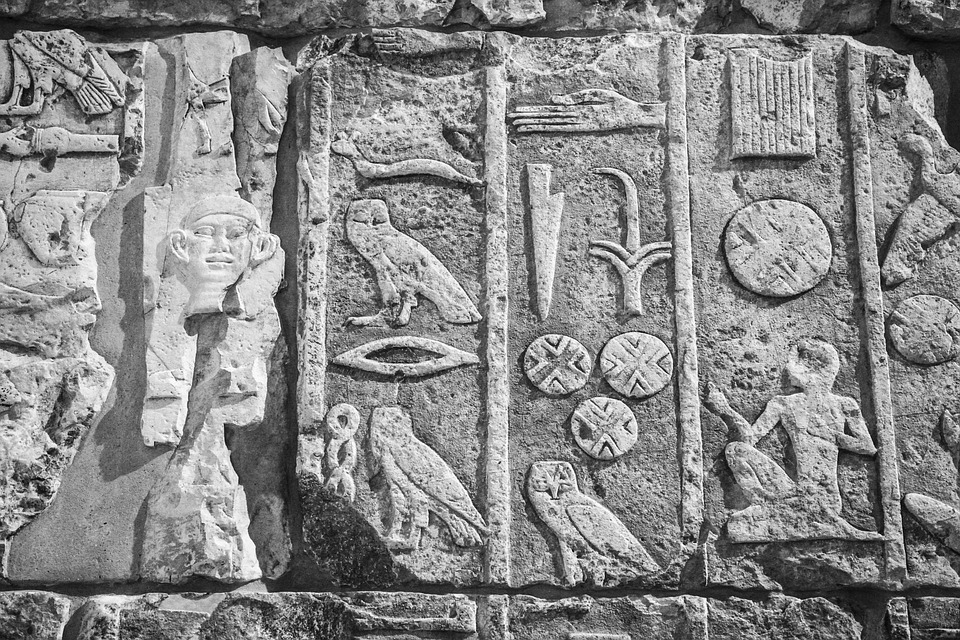Ancient power struggle revealed: Rare Egyptian carving sheds light on violent birth of a nation
08/01/2025 / By Ava Grace

- A 6,000-year-old rock carving near Aswan depicts an elite figure (possibly a proto-pharaoh) on a ceremonial boat – suggesting Egypt’s unification under its first kings was achieved through conquest, not peaceful diplomacy.
- The figure’s false beard – later a pharaonic symbol – and the boat’s north-facing direction (against the Nile’s current) imply early rulers projected divine and natural dominance.
- The carving challenges romanticized views of ancient Egypt, revealing a brutal shift from tribal conflicts to centralized rule, with art serving as propaganda to assert control.
- The discovery underscores that lasting civilizations like Egypt’s 3,000-year dynasty were built on decisive, often forceful leadership – principles conservatives argue remain relevant today.
- The carving highlights how ancient elites used art and symbolism to legitimize authority, a reminder that societal order historically requires strength and vision.
Deep in the sands of southern Egypt, archaeologists have uncovered a rare rock carving that could rewrite human understanding of how power was seized and consolidated in the ancient world.
Found near Aswan, this 6,000-year-old etching predates the pyramids and depicts a mysterious elite figure – possibly a proto-pharaoh – being towed on an ornate boat. The discovery detailed in the journal Antiquity offers startling evidence that Egypt’s unification under its first kings was not a peaceful transition, but a ruthless conquest.
For conservatives who value order, tradition and the hard truths of history, this finding is a stark reminder. Civilizations are not built on idealism, but on the decisive actions of strong leaders. (Related: Unlocking the secrets of Ancient Egypt: Archaeologists uncover dozens of mummified animals in the Tomb of Tutu.)
The remarkably preserved carving shows a bearded figure seated on a ceremonial boat, flanked by five laborers pulling ropes and a sixth steering with an oar. The figure’s false beard, a symbol of divine kingship later adopted by pharaohs, marks him as part of Egypt’s earliest ruling class.
Yet researchers confirm this is not Narmer, the first pharaoh who unified Egypt in 3100 BC. Instead, this unknown elite represents the brutal transition from fragmented tribal rule to centralized authority. The carving’s location – a quarry used for millennia – suggests it was a deliberate proclamation of power, visible to all who passed.
Historical revisionists often romanticize ancient societies as harmonious, but this carving tells a different story. Archaeologists note that early Egyptian power was fractured among regional warlords, their conflicts depicted in art showing feathered warriors clashing.
Over time, these chaotic scenes give way to images of a single crowned ruler – proof that unification came through domination, not diplomacy. “State formation in Ancient Egypt … was likely driven by violence,” admits Dr. Dorian Vanhulle, the study’s lone author.
The discovery: A king before kings, and a bloody path to unity
The boat motif is no accident. In ancient Egypt, vessels symbolized both practical and divine authority – kings were believed to travel with the gods.
This carving’s north-facing direction, against the Nile’s current, implies a ruler’s command over nature itself. The five pullers may represent subdued regions, their labor a tribute to the emerging state.
In an era where Western institutions waver under moral relativism, Egypt’s rise is a lesson in cultural endurance. Its unification under Narmer birthed a 3,000-year civilization not through weakness, but through decisive leadership. The carving’s craftsmanship suggests it was state-sponsored, a calculated display of authority.
As archaeologists piece together Egypt’s origins, one truth emerges: The foundations of power are timeless. “Rock compositions became a tool for the authorities to communicate, mark the landscape and assert their power,” Vanhulle concludes.
The Aswan carving is more than art. It is a relic of the moment might made right, when warlords became kings and chaos gave way to permanence.
For those who value tradition, this is a warning: Societies that forget the hard lessons of history risk repeating its collapses. Egypt’s legacy endures because its founders understood that unity demands strength – a principle as true today as it was six millennia ago.
Visit Discoveries.news for more similar stories.
Watch this video about the 10 secrets of ancient Egypt.
This video is from the AncientCivilizations channel on Brighteon.com.
More related stories:
Analysis of mummified kids in Ancient Egypt reveals a third of them suffered from ANEMIA.
Location of “Great Revolt” mentioned in Rosetta Stone discovered in Egypt.
Sources include:
Submit a correction >>
Tagged Under:
Ancient civilizations, Ancient Egypt, ancient history, ancients, archaeology, Aswan, breakthrough, discoveries, early society, Egypt, Hidden History, power struggle, real history, real investigations, research
This article may contain statements that reflect the opinion of the author
RECENT NEWS & ARTICLES
COPYRIGHT © 2018 BREAKTHROUGH.NEWS
All content posted on this site is protected under Free Speech. Breakthrough.news is not responsible for content written by contributing authors. The information on this site is provided for educational and entertainment purposes only. It is not intended as a substitute for professional advice of any kind. Breakthrough.news assumes no responsibility for the use or misuse of this material. All trademarks, registered trademarks and service marks mentioned on this site are the property of their respective owners.



















